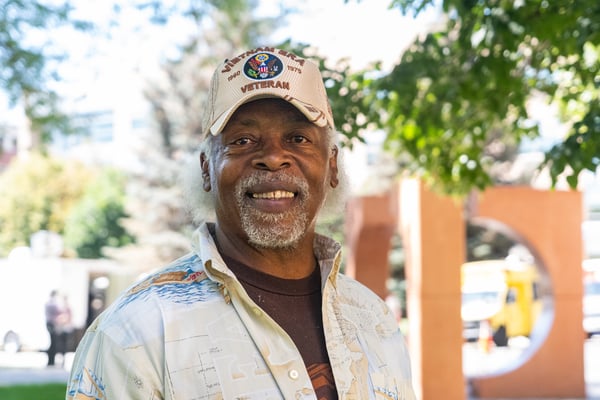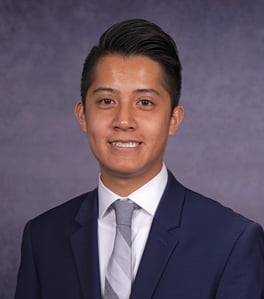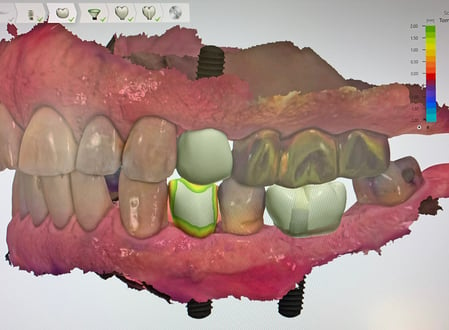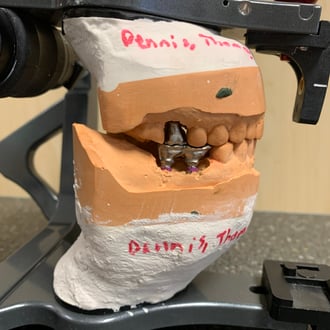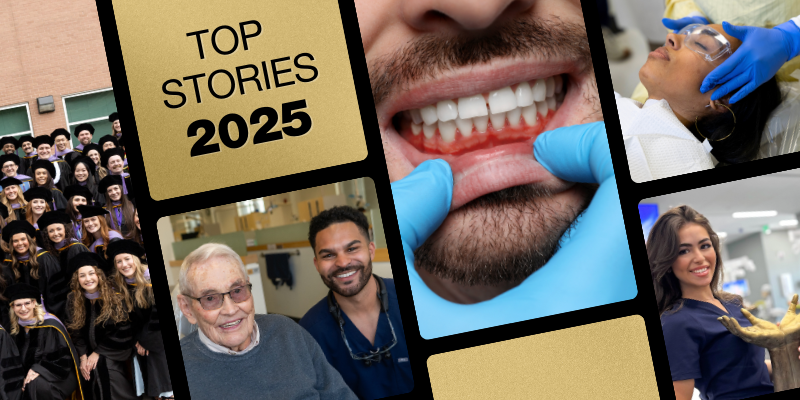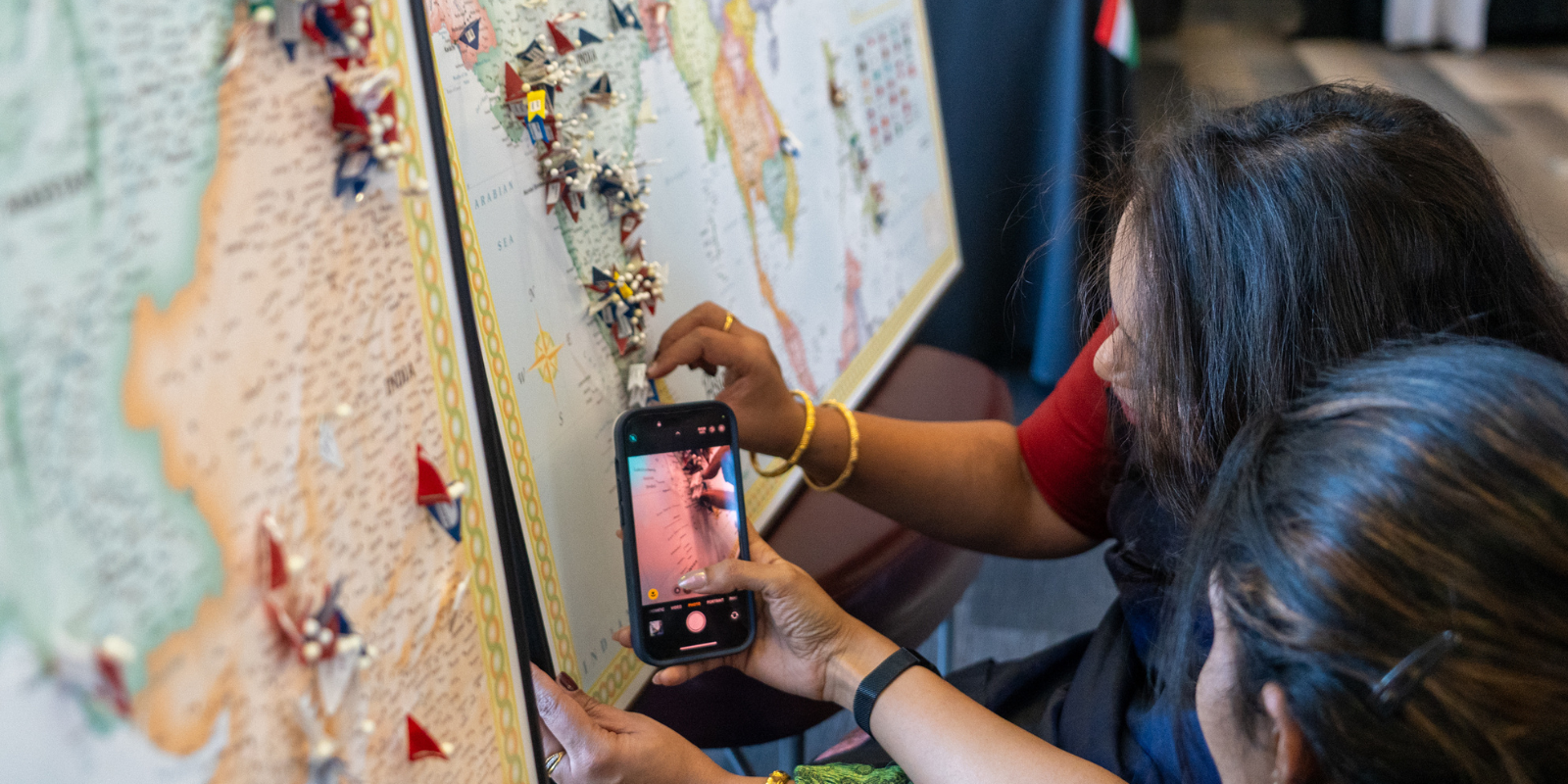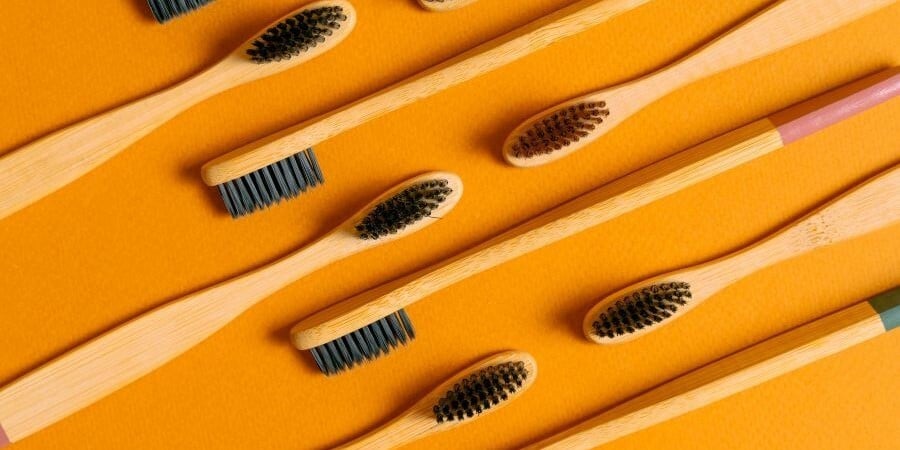“You don't realize how important your back teeth are until they’re not there,” said fourth-year dental student Minh-Tom Van (DDS '23) as he reflected on a recent case. His patient had been experiencing pain in his back molars, unable to chew or eat properly for eight months. While this is not an unusual situation, Van was inspired by a faculty member to present an exceptional idea for treatment.
|
|
When learning how to take impressions, design crowns and restore implants, students at the University of Colorado School of Dental Medicine (CU SDM) are taught two processes: digital and analog. Van thought, why not learn both at once?
“This is an exciting case because it's a way to step into the advancement of dentistry,” said CU SDM Clinical Associate Professor Brian Brada, DDS '80. “Students can learn how to take a traditional, analog impression on one side, and a digital impression on the other. This is the first time we’re doing something like this here at CU Dental.”
Van's class was the first cohort of students to take a new course called Advanced and Digital Prosthodontics, where they get the opportunity to learn how to use a 3D scanner to take digital impressions. After getting his toes wet with an introduction, Van was eager to put it into practice. He worked with one of his mentors, Clinical Associate Professor David Gozalo, DDS, MS, to put together a treatment plan.
“This wasn’t a traditional aesthetic case where the goal is to create a smile that looks nice,” said Van. “This was more about restoring the function of the patient’s teeth and mouth. It was difficult for him to eat well. You don’t realize how important your back teeth are until they’re not there.”
Lifelong Learner Embraces Students' Innovative Ideas
Patient Dennis Thomas, a Vietnam War veteran and University of Colorado alumnus, needed six implants total: three on one side of his mouth and three on the other. He has always been an advocate for continuing education, so when Van presented him with the opportunity to be a part of something new and elevate students’ learning, he was more than happy to help.
“I was in the U.S. Army Medical Command, so I understand what it’s like to be a student. That’s part of the reason I decided to get my dental work done here at the school; I’m happy to be a part of their education and the early stages of their careers.”
- CU Dental patient Dennis Thomas
Thomas traveled the world with the military for 23 years from Colorado to Missouri, Hawaii, Germany and back. He even spent time in a radiology military medicine program at the historic Fitzsimmons Army Hospital, which is now the cornerstone building on the CU Anschutz Medical Campus.
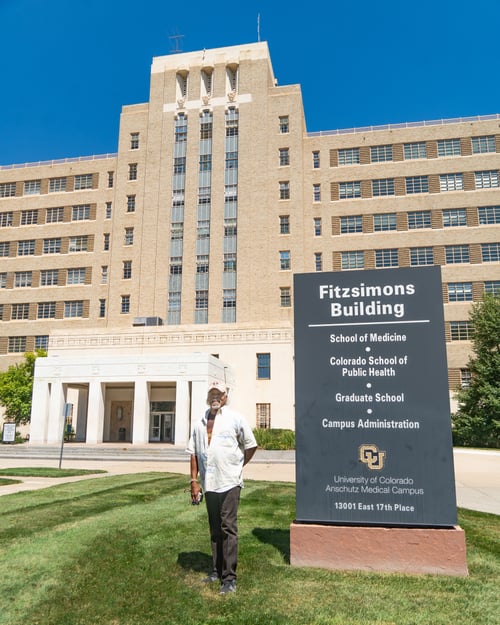
Dennis Thomas in front of the historic Fitzsimons Building
As a lifelong learner, Thomas likes to stay busy—to say the least. Currently, he is a pilot, a flight instructor, a martial arts instructor, a skier and snowboarder, a photographer, a jazz musician, and a scuba diving instructor.
“Education doesn’t stop. I’m in my seventies and every day I want to learn something new.”
This impressive set of interests created a unique concern for his dental care: he had to be absolutely certain there were no air pockets in his mouth. If he were to fly too high or dive too deep with an air pocket, the buildup of atmospheric pressure changes could cause extreme discomfort, or worse, it could burst and rupture the tooth.
“My dental care team is very attuned to my needs,” said Thomas. “Like a bartender remembering your drink, they remember I'm a scuba instructor and a pilot, and they always ask how everything’s going. I can tell they’re not just asking to see how my mouth feels, but also because they care about me personally. It’s rewarding to see health care providers pay attention like that.”
Thomas and Van especially bond over their Colorado upbringings: Both were born and raised here in the Centennial State and attended the University of Colorado Denver for undergraduate education.

Student Minh-Tom Van and patient Dennis Thomas in the CU School of Dental Medicine Student Clinic
Digital versus analog, from the student and patient perspectives
“I anticipate the long-term results between the analog and digital implants to be very similar,” said Van. “It's like two different paths towards the same goal.”
In a traditional analog process, the student takes gooey impressions of the patient’s mouth and sends the physical impression to a lab to create the implant crowns.
In a digital process, the student creates a 3D rendering of the patient’s mouth using a TRIOS 3Shape digital scanner. The implants are then designed in a computer program and milled using an Ivoclar milling machine, which creates an identical physical replica of the digital design, ready to be delivered to the patient in minutes.
“[Thomas] enjoyed the whole digital process,” said Van. “It's much quicker for the patient. Although it’s more work for me as the student and for the advising practitioner, it’s well worth it, in my opinion, to provide quality treatment in a more efficient manner.”
|
3D rendering of patient's mouth (left side) with digitally-designed implant crowns shown in place |
Analog impressions of patient's mouth (right side) with physical implant crowns in place |
Students learn the process of digital impressions as part of their curriculum, but historically they’ve sent the digital files out to the labs to create the implants. In this case, however, Van ordered all the implant parts, digitally designed the crown with his faculty supervisors, and milled the implant crown to abutment himself.
This is the first time a student has completed the full milling process, from impressions to delivery, all in the student clinic.
The final step is making sure the implants fit correctly, feel good, and function as close to natural teeth as possible. “That’s the goal,” said Van.
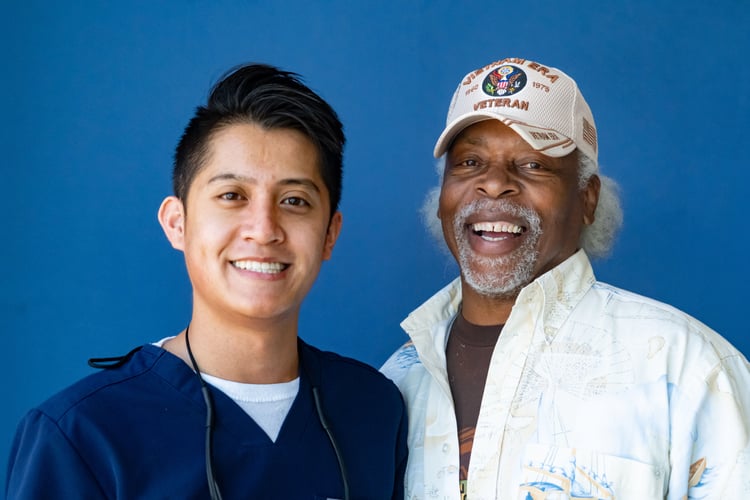
At his first follow-up appointment, Thomas told Van, “I feel great. My bite feels natural, the alignment gives me a nice smile, and all the implants feel like my real teeth. I’m proud of the work that [Van] has done. I really appreciate him and the whole team.”
When asked what he’s going to eat first—now that he has full functionality in his back teeth—Thomas said, “I’m going to smoke some brisket and ribs for my family this weekend. I can’t wait to dig in.”
